Best telescope mounts in 2025: Track and locate stars, planets and deep space objects
Get the best telescope mount to make the most of your telescope. Upgrade your stargazing experience this holiday season.

The right telescope mount can make a serious difference to your stargazing experience. You can have a powerhouse of a telescope, but if your mount isn't up to scratch, you are not making the most of it. That's why we have rounded up the best telescope mounts to suit a range of budgets.
Now is a great time to trade up your telescope mount, too, ensuring that your scope stays steady when you're stargazing. As the nights draw in, it will be easier to spot fainter objects in the darkened skies. We have included motorized mounts in our guide which, with the touch of a button, can auto-home in on stars, nebula, planets and other objects. Or if you're starting entirely from scratch, we've also rounded up the best telescopes and best telescopes for beginners.
The Quick List
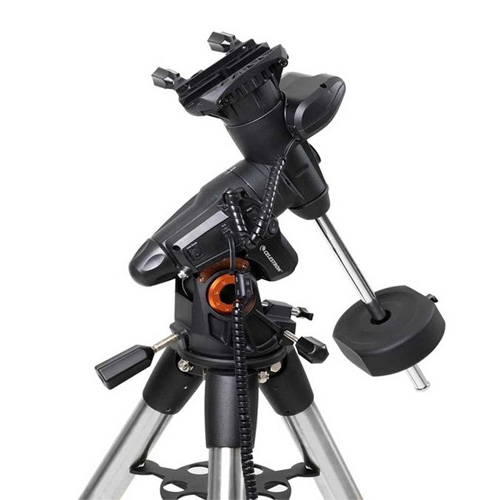
Best overall mount
A superb motorized go-to mount that punches above its weight, offering advanced features for the price.

Best heavy-duty mount
It may be on the expensive side, but this long-time classic remains a superb choice for heavy-duty use.
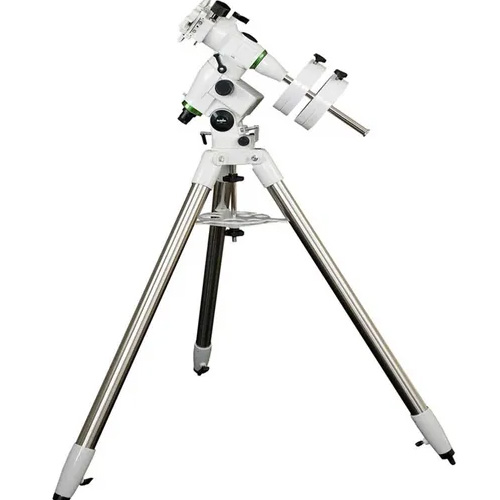
Best budget mount
This equatorial mount is a firm favorite among amateur astronomers. A true skywatching workhorse, it's available for a pleasingly low cost.
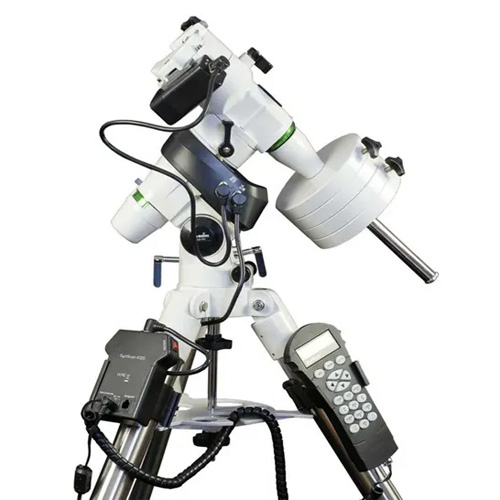
A fully motorized go-to mount, coupled with a massive database of objects, offering a great platform to start serious astrophotography.
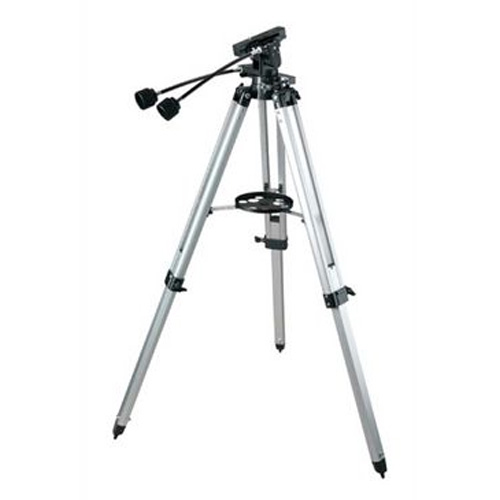
Celestron's heavy-duty alt-azimuth tripod is an ideal entry-level mount for visual observers, and it won't break the bank.
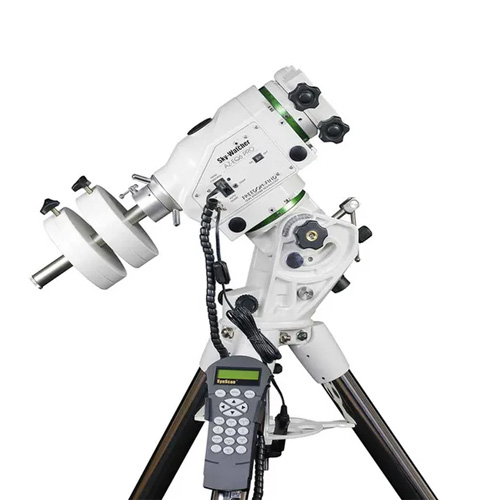
A fully motorized go-to mount that can operate in both alt-az and equatorial modes, an excellent buy for more serious astronomers.
Best telescope mounts we recommend in 2025
Why you can trust Space.com
Best overall
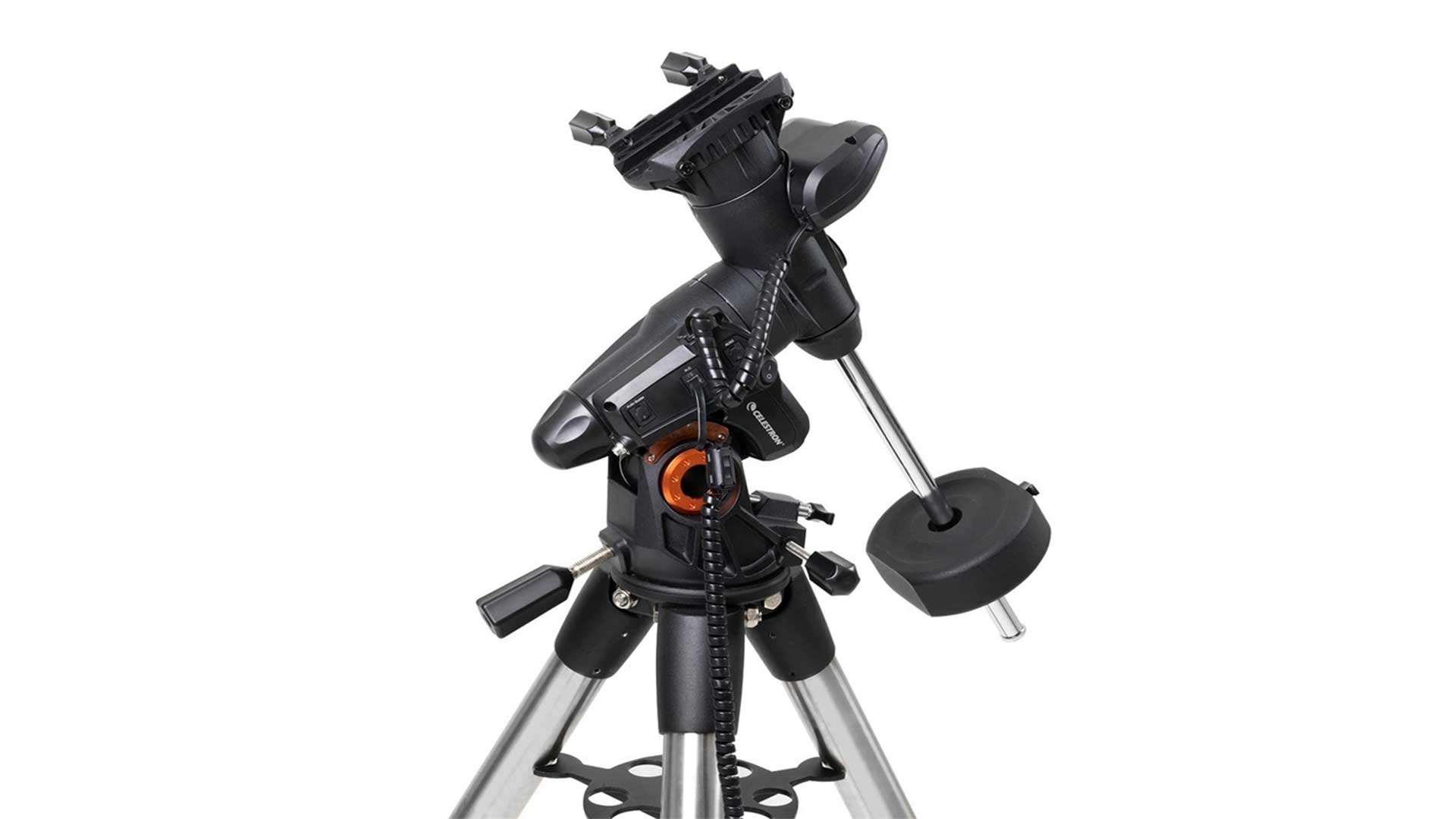
Celestron Advanced VX GOTO Equatorial Mount
Our expert review:
Specifications
Reasons to buy
Reasons to avoid
Celestron's Advanced VX mount is a modern revision of their popular CG-5 mount and a direct competitor to the Sky-Watcher EQ-5. It offers an array of advanced features and a slightly increased payload capacity meaning larger optical tubes can be used. For example, Celestron offers this mount as part of a package with their popular C8 Schmidt Cassegrain for which it is well suited.
The slewing and tracking accuracy of the VX mount is also impressive and the control system is very user-friendly and easy to get to grips with. The polar alignment method available using the telescope software is easily accomplished and results in accurate alignment. Overall the VX mount is a great platform for most small telescopes and is one of the best available at its price point.
Best heavy-duty
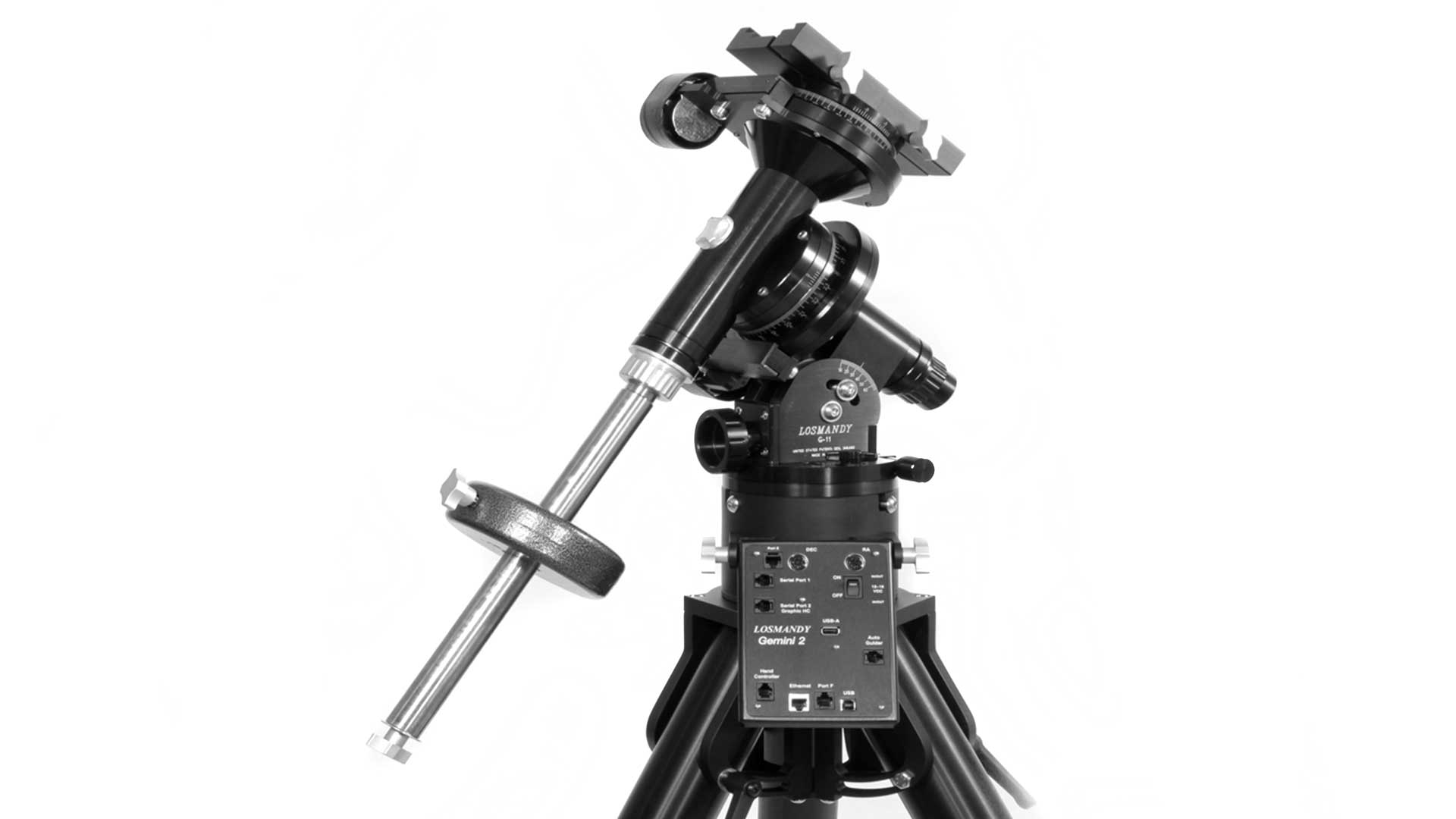
Losmandy G-11 Equatorial Mount
Our expert review:
Specifications
Reasons to buy
Reasons to avoid
The Losmandy G-11 mount is one of the most popular serious telescope mounts of the past few decades. Its superb build quality and great performance has garnered a loyal following over the years. The latest version offers dual-axis go-to slewing via the Gemini 2 system. It can also carry larger telescopes and is an ideal platform for serious astrophotographers.
Having been a long-time owner and user of the G-11 mount its flexibility, performance and build quality put it among the best serious mounts available. You can also order the mount with a high-quality polar alignment scope which allows fast and very accurate alignment for those who do not have a permanent observing site. Overall, a superb choice for the more serious or experienced observer.
Best budget
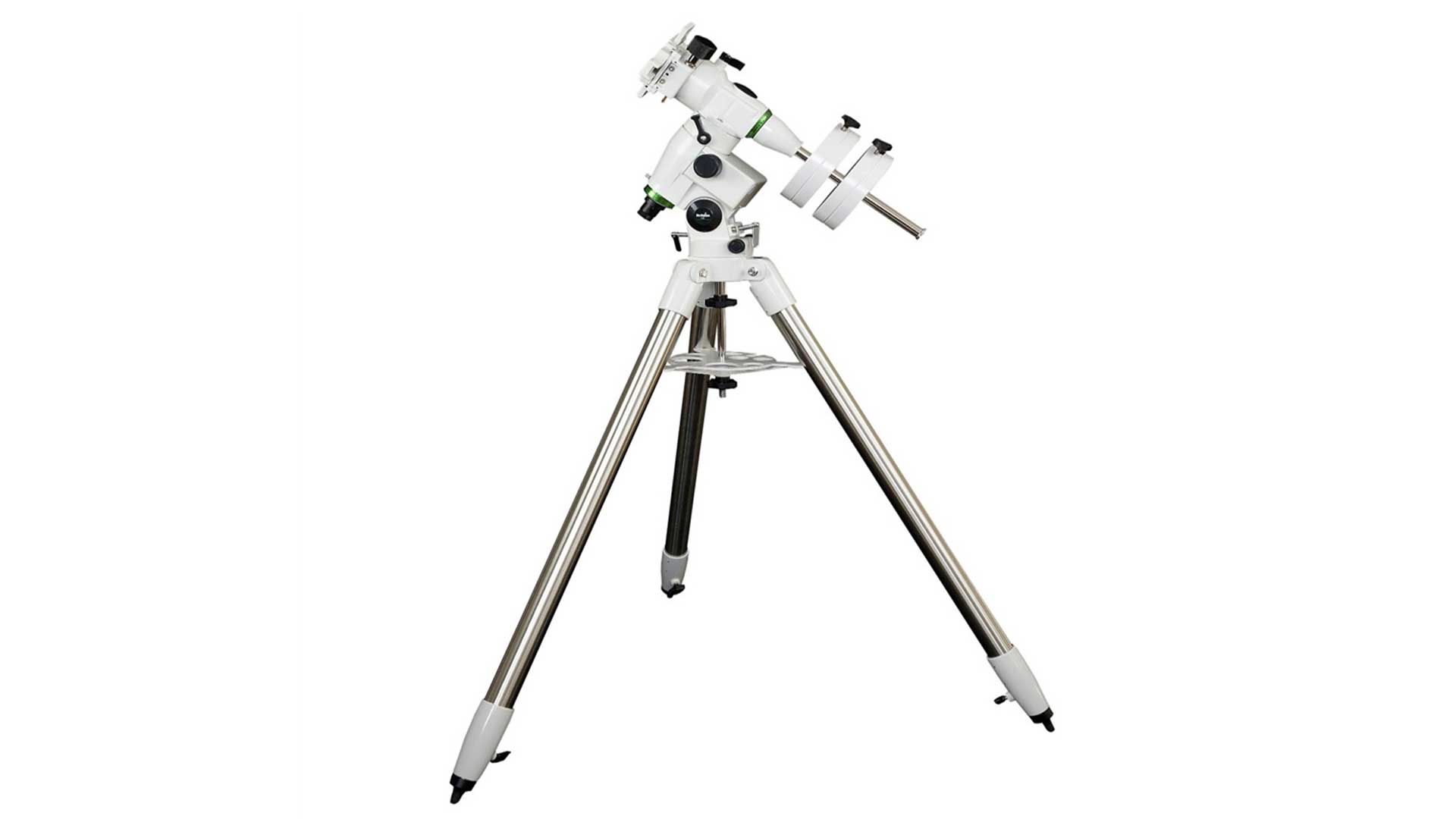
Sky-Watcher EQ-5 Deluxe Mount and Tripod
Our expert review:
Specifications
Reasons to buy
Reasons to avoid
Sky-Watcher's EQ-5 mount has long been used by amateur astronomers worldwide. Its modest size, low cost and array of features have made it among the most popular small telescope mounts ever produced. It is one of the most popular entry-level equatorial mounts on the market. The EQ-5 also comes as part of many small telescope packages offering the option to purchase a complete telescope with a proper astronomical mounting.
Above is featured the manual version, but for an additional cost dual-axis motor drives can be added enabling a great platform with which to venture into trying astrophotography. An optional polar scope is also available for fast and accurate polar alignment. The EQ-5 is a highly capable portable mount and is easily capable of holding most small telescope tubes up to around 20cm aperture.
Best for features

Sky-Watcher EQ-5 Pro GOTO Mount & Tripod
Our expert review:
Specifications
Reasons to buy
Reasons to avoid
The fully computerized version of Sky-Watcher's EQ5 mount represents a great mount to venture into the world of astrophotography with. Along with dual axis motor drives, it offers full go-to capability with a large object database. Multiple tracking rates are also available as is an autoguider port for long-exposure deep-sky imaging.
The EQ-5 performs best of all with small telescope tubes. Refractors below 5-inches (13cm) and reflectors below 8-inches (20cm) are the best fit for this mount. For example, it is perfectly capable of providing a solid platform for the highly popular 8-inch (20cm) Schmidt Cassegrain telescope. The EQ-5 is also highly portable and is an ideal choice for those without a permanent observing site.
Best for beginners
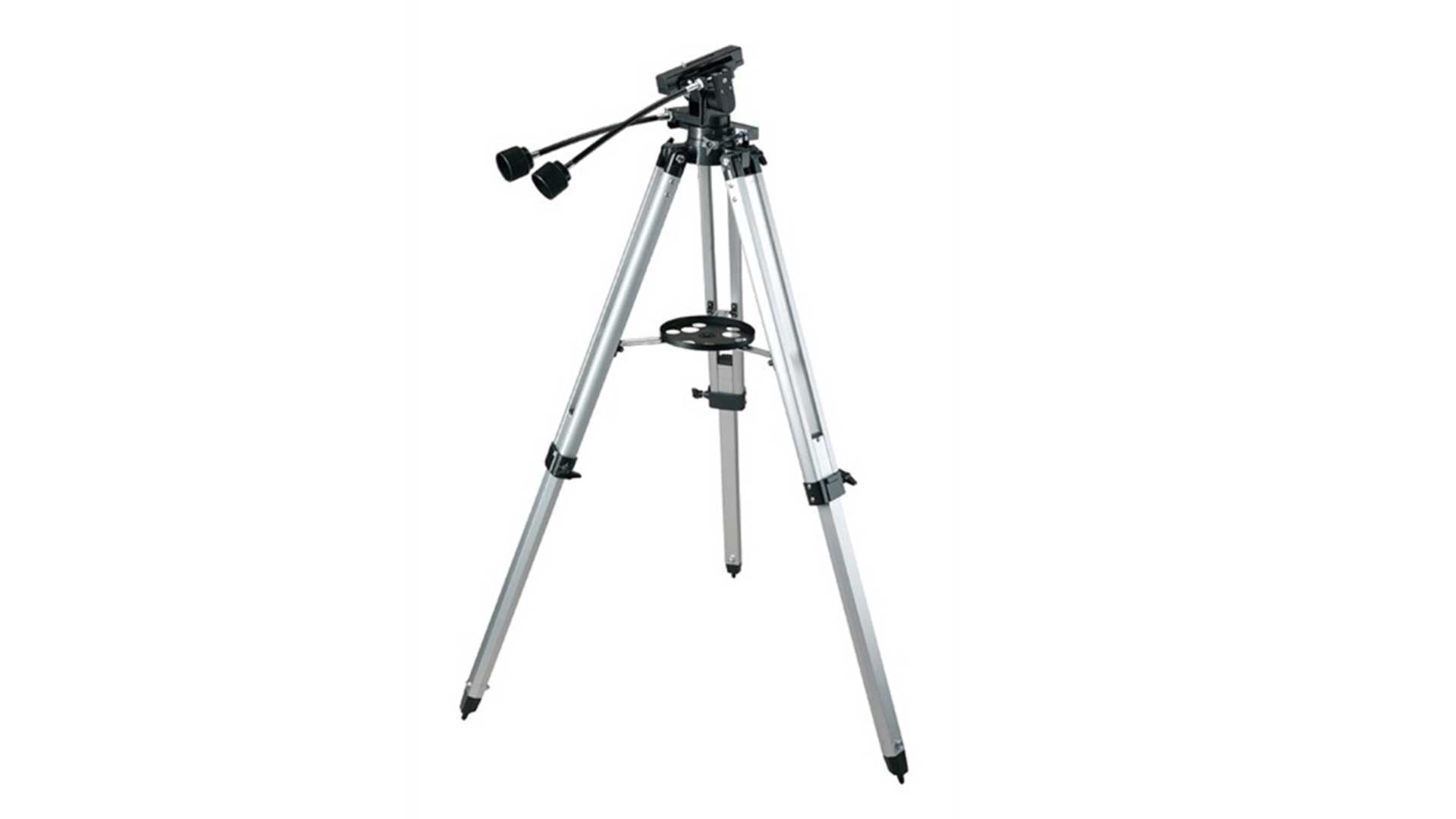
Celestron Heavy Duty Alt-Azimuth Tripod
Our expert review:
Specifications
Reasons to buy
Reasons to avoid
The Celestron Heavy Duty Alt-Azimuth tripod is an ideal entry-level mounting for binoculars or small telescopes. It offers manual slow-motion controls for fine adjustments and its standard camera tripod mounting bracket allows quick attachment of many small telescopes, binoculars or cameras.
Though the simplest entry of the six mounts we look at here, it's a sturdy and solid tripod that will nicely hold a small telescope in the 3-inch to 5-inch (7-13cm) aperture range. The addition of slow-motion controls is useful, especially for observing objects at higher magnifications. Overall, this is a nice low-cost mount for those just starting out, or anyone looking for a quick 'grab and go' mount for a small telescope or binoculars.
Best for serious astronomers
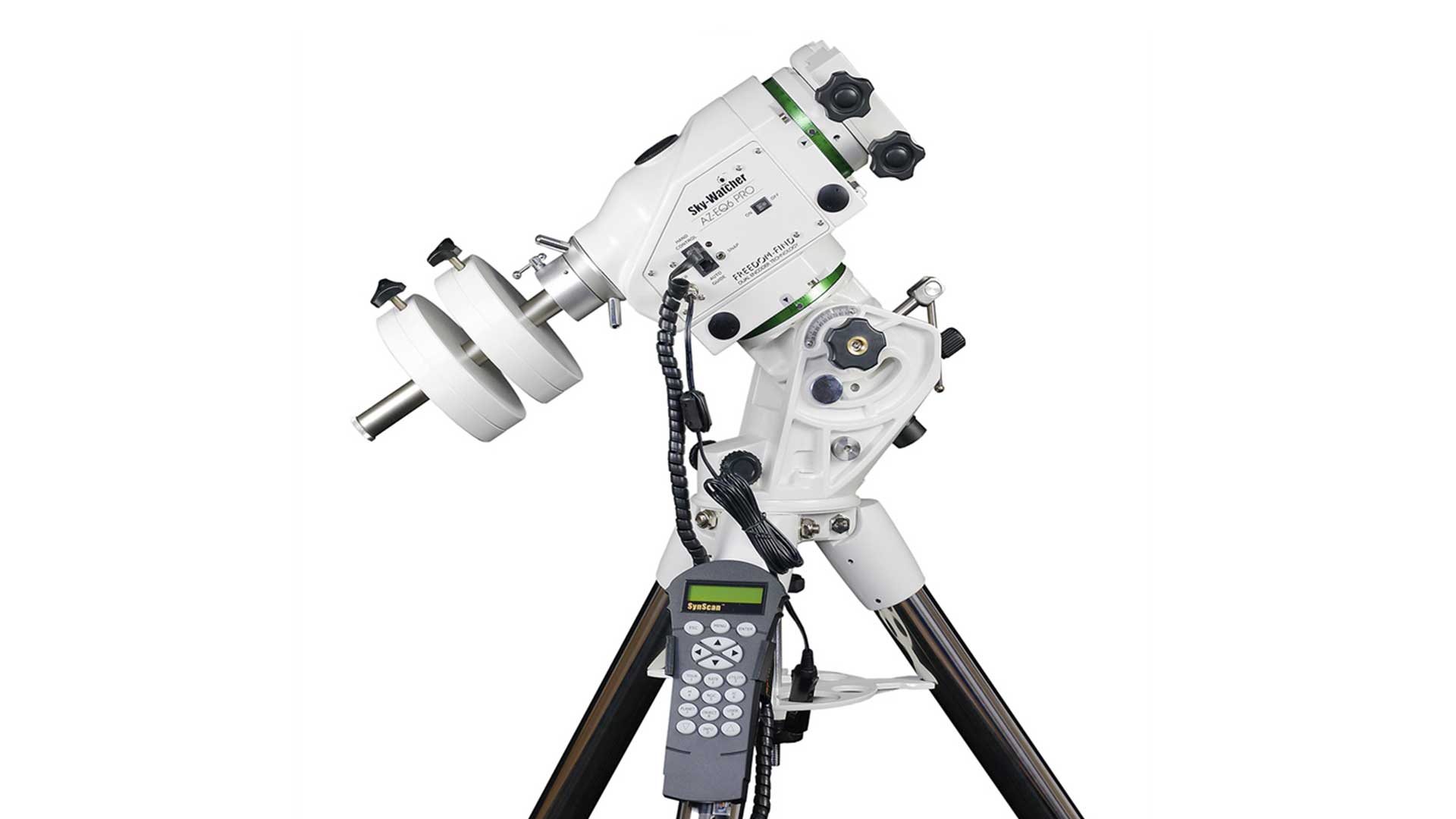
Sky-Watcher AZ-EQ6GT GOTO Dual Mount
Our expert review:
Specifications
Reasons to buy
Reasons to avoid
The AZ-EQ6GT mount is the latest incarnation of Skywatcher's much-used EQ6 mount. This mount has proven hugely popular over the past two decades, and this latest version offers some great features. The ability to operate in either equatorial or alt-azimuth works well and its decent payload capacity means many different telescopes can be mounted to it.
The mount also has a neat feature of the user being able to move the telescope around manually without the mount losing its positional information meaning it can be slewed using the motors or pushed by hand. The quote payload capacity is impressive and well above the entry-level mounts such as the EQ-5. The EQ-6, in any form, is a great choice for the more serious amateur astronomer and this latest version is a great addition.
Best telescope mounts FAQ
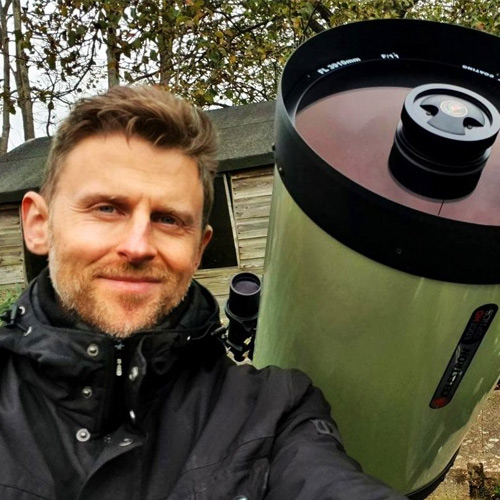
Damian A. Peach FRAS is a British amateur astronomer, astrophotographer, lecturer and author, best known for his photographs of a wide variety of astronomical objects.
His images have been featured in Astronomy Magazine, Sky & Telescope, Astronomy Now & The Sky at Night. He has also authored articles on astrophotography for these magazines, and has also been a co-author on several professional scientific papers on planetary astronomy.
When is Amazon Prime Day Big Deals Days in October?
It was Tuesday Oct. 7 and Wednesday Oct. 8, ending at midnight. Black Friday, a bigger and longer event, will take place at the end of November.
What type of mount should I buy?
There are different mounts to account for different types of skywatching and stargazing techniques, each with their own unique uses. The most common types are: Alt-azimuth, German equatorial, Fork mounted equatorial and Dobsonian. All of these types can be offered in manual, motorized, or computerized formats. The best choice depends upon your own observing requirements. For example, a manual mount such as a low-cost Dobsonian would be ideal for visual observing. For astrophotography, a motorized or computerized equatorial mount is desirable.
What is an alt-azimuth mount?
Alt-azimuth mounts are the most basic, offering a design whereby the telescope is moved in a horizontal or vertical motion to locate objects. These mounts can come in either manual or computerized formats. Typically most Dobsonian's are manual alt-azimuth mounts with fork-mounted Schmidt Cassegrains being computerized alt-azimuth.
What is a Dobsonian mount?
A Dobsonian mount is a type of mounting that is a variation on the alt-azimuth designed specifically for Newtonian reflecting telescopes. These are available in a simple manual push-pull design or fully computerized with object tracking and go-to.
What is an equatorial mount?
The German equatorial mount is probably the most popular telescope mount design for amateur size telescopes. The equatorial mount compensates for Earth's rotation by having one axis aligned to the celestial pole allowing a motor drive to move the telescope in sync with the apparent motion of the night sky. This allows the telescope to keep track of any celestial target for long periods, allowing astrophotography to be attempted.
What is a fork-mounted equatorial?
The fork-mounted equatorial is often found these days as an option for computerized Schmidt Cassegrain whereby the fork-mounted telescope will sit on a wedge allowing it to be aligned to the celestial pole.
What should you consider when buying a telescope mount?
Firstly, you need to make sure your telescope mount isn't massively under-sized as unstable mounts can be criminally frustrating. You also shouldn't go for anything that's considerably above your knowledge and experience level as, again, you could be left frustrated. Since a good mount that matches the size and weight of your telescope is vital, it's also important you don't blow your budget on the telescope. Investing in the mount itself can give you the stable and reliable stargazing experience you want, regardless of the money you've spent on the telescope.
Best telescope mounts: Comparison
Product | Rating | Mount type | Drive type | Best suited for | Maximum payload capacity | Mount head fit | What's included |
|---|---|---|---|---|---|---|---|
Sky-Watcher EQ-5 Deluxe Mount and Tripod | ★★★★ | German Equatorial | None. Manual slow motion controls on both axes (motor drive optional) | Binoculars or small telescopes below 8-inches (20cm) aperture | 7kg | CG-5/Vixen dovetail | Mount head, tripod, and eyepiece accessory tray |
Sky-Watcher EQ-5 Pro GOTO Mount & Tripod | ★★★★ | German Equatorial | Dual-axis drives with full go-to capability | Small telescopes below 8-inches (20cm) aperture | 7kg | CG-5/Vixen dovetail fit | Mount head, tripod, and eyepiece accessory tray, computer drive handset |
Celestron Advanced VX GOTO Equatorial Mount | ★★★★★ | German Equatorial | Dual axis drives with full go-to capability | Small telescopes below 9-inches (23cm) aperture | 9kg | CG-5/CGE dual fit | Mount head, tripod, and eyepiece accessory tray, computer drive handset |
Celestron Heavy Duty Alt-Azimuth Tripod | ★★★ | Alt-azimuth | None. Manual slow motion controls on both axes | Binoculars or small telescopes below 5-inches (13cm) aperture | 6kg | Tripod fit 1/4-inch to 20 thread mounting bolt retained in the plate | Tripod, accessory tray and tripod head |
Sky-Watcher AZ-EQ6GT GOTO Dual Mount | ★★★★½ | Dual option Alt-Azimuth/German Equatorial | Dual-axis drives with full go-to capability | Small telescopes below 12-inches (30cm) aperture | 25kg | Dual fit 45mm and 75mm dovetail plates | Tripod, accessory tray and tripod head |
Losmandy G-11 Equatorial Mount | ★★★★★ | German Equatorial | Dual-axis drives with full go-to capability | Telescopes up to 14-inches (36cm) aperture | 28kg | Losmandy large dovetail fit | Mount head, heavy-duty tripod, computer drive and handset |
Summary
Update log
Editor's note: Updated 6/17/25 to add details to the intro about June's new moon-darkened skies.
Breaking space news, the latest updates on rocket launches, skywatching events and more!
Damian A. Peach FRAS is a British amateur astronomer, astrophotographer, lecturer and author. Best known for his photographs of a wide variety of astronomical objects. His career in the field spans over thirty years.
Peach's passion for Astronomy first began in 1988 inspired by books in his school library. Later he joined the British Astronomical Association (BAA) in 1996 and since then has contributed large amounts of observations to the various observing sections and also written and co-authored many papers in the organization's journal. He was awarded the organization's prestigious Merlin Medal in 2006. The same year he was also awarded the Association of Lunar and Planetary Observers (ALPO) Walter H. Haas award for his contributions.
Peach has provided astronomical images for magazines and books throughout his career. His images have been featured in Astronomy Magazine, Sky & Telescope, Astronomy Now & The Sky at Night. He has also authored articles on astrophotography for these magazines. Peach has also been a co-author on several professional scientific papers on planetary astronomy, especially regarding work on Mars and Jupiter. He was one of only a few amateur astronomers to have work featured as part of the national Explorers of the Universe exhibition at the Royal Albert Hall in 2007. His work has also appeared at the Edinburgh Science Festival, and The Royal Greenwich Observatory.
Peach's work has also been used by NASA and ESA to illustrate what ground-based telescopes can achieve in photographing the planets, and the support they can provide to professional space probe missions.
- Chris McMullenContributing Writer
- Harry BennettE-commerce Staff Writer
